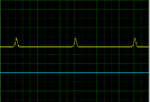Don_dody
Full Member level 1
Can somebody tell me the circuit to vary the light intensity of 220 VAC lamp using microcontroller (PWM) ? I mean the connection and the dimmer circuit from microcontroller output to the AC lamp.
Follow along with the video below to see how to install our site as a web app on your home screen.
Note: This feature may not be available in some browsers.
modern regulators use FETs since thyristors cause more hindrances and acoustic noise.
**broken link removed**
I cannot read it and I don't understand. Is there any other link in English maybe?

#include <mega8535.h>
#include <delay.h>
interrupt [EXT_INT0] void ext_int0_isr(void)
{
PORTD=0x02;
delay_ms(2);
PORTD=0x00;
};
void main(void)
{
DDRB=0x01;
DDRD=0x02;
GICR|=0x40;
MCUCR=0x01;
MCUCSR=0x00;
GIFR=0x40;
#asm("sei")
while (1)
{
PORTB=0x01; // flashing light on LED
delay_ms(1000);
PORTB=0x00;
delay_ms(1000);
};
}